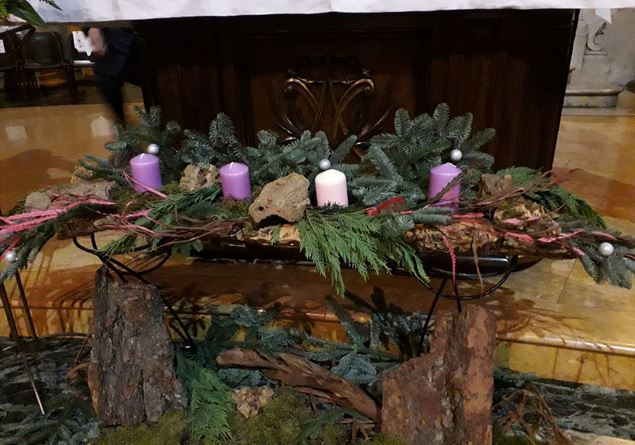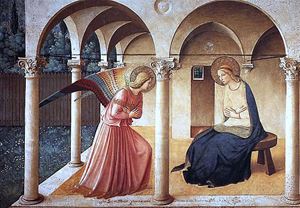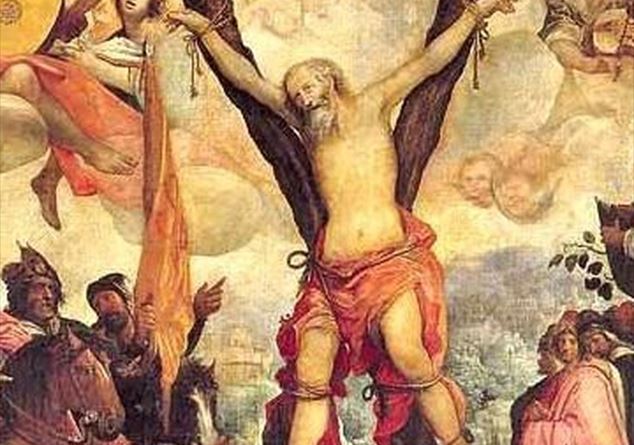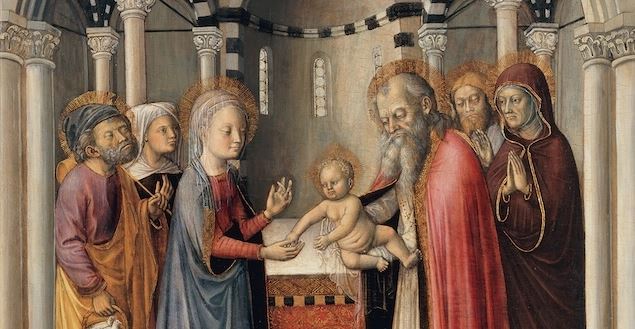
Advent is the liturgical season that precedes and prepares for Christmas: in Western Christian rites it marks the beginning of the new liturgical year. The word Advent comes from Latin adventus and it means “coming” even if, in the most widespread sense, it is referred to as “waiting”.
Antonello da Messina, Annunciation, 15th century, (Palermo, Regional Gallery of Sicily)
What is the historical origin?
The origin of the time of Advent is later, in fact it is identified between the 4th and 6th centuries. The first celebration of Christmas in Rome dates back to 336, and it is precisely towards the end of the 4th century that a period of preparation for the Christmas celebration is found in Gaul and Spain.
Although the first Christmas celebration was celebrated in Rome, a time of preparation occurred here only starting from the 6th century. It is certainly not surprising that Advent was born with a configuration similar to Lent, in fact the celebration of Christmas from its origins was conceived as the celebration of the resurrection of Christ on the day in which his birth is commemorated.
In 380 the Council of Zaragoza imposed the continuous participation of the faithful in community meetings between 17 December and 6 January. Six weeks will then be dedicated to preparing for the Christmas celebrations. In this period, as in Lent, some days are characterized by fasting. This period of time was called “St. Martin’s Lent”, since the fast began on November 11th. Saint Gregory of Tours is a witness of this, around the 6th century
What is the theological significance?
Advent theology revolves around two main perspectives. On the one hand, the term “adventus” (coming, arrival) was intended to indicate the anniversary of the first coming of the Lord; on the other hand it designates the second coming at the end of time.
The Season of Advent therefore has a double characteristic: it is a time of preparation for the solemnity of Christmas, in which the first coming of the Son of God among men is remembered, and at the same time it is the time in which, through this memory, the spirit is guided to the expectation of the second coming of Christ at the end of time.

Beato Angelico, Annunciation (1438-1450), Florence, San Marco Museum
When does it begin and how is it liturgically marked?
The Season of Advent begins from the first Vespers of the last Sunday of November (or first of December, depending on the calendar) and ends before the first Vespers of Christmas. It is characterized by a double itinerary – Sunday and weekdays – marked by the proclamation of the Word of God.
-Sundays – The Gospel readings have their own characteristic on each Sunday: they refer to the coming of the Lord at the end of time (1st Sunday), to John the Baptist (2nd and 3rd Sunday); to the immediate facts of the birth of the Lord (4th Sunday). The Old Testament readings are prophecies about the Messiah and the messianic time, taken mainly from the book of Isaiah. The Apostle’s readings contain exhortations and announcements, in harmony with the characteristics of this time.
-The holidays – There is a double series of readings: one from the beginning of Advent until December 16th, the other from the 17th to the 24th. In the first part of Advent the book of Isaiah is read, according to the order of the book itself, not excluding the most important texts, which also occur on Sunday. The choice of the Gospels of these days was made in reference to the first reading. The Gospel readings on John the Baptist begin on Thursday of the second week; the first reading is instead either a continuation of the book of Isaiah, or another text, chosen in reference to the Gospel. In the last week before Christmas, passages from the Gospel of Matthew (chapter 1) and Luke (chapter 1) are read which tell the story of the events that immediately preceded the birth of the Lord. For the first reading, various texts from the Old Testament were chosen in reference to the Gospel, including some messianic prophecies of considerable importance.
Is the Ambrosian Advent “different” from that of the Roman Rite?
Yes, in the Ambrosian Rite it consists of six Sundays and lasts six weeks. It starts on the first Sunday after St. Martin’s Day (11 November) and always includes 6 Sundays (when December 24th falls on a Sunday, a Pre-Christmas Sunday celebration is expected). The liturgical color Morello is expected, except on the last Sunday (called “of the Incarnation”) when white is used:
– Sunday of the coming of the Lord
– Sunday of the children of the kingdom
– Sunday of fulfilled prophecies
-Sunday of the entry of the Messiah
-Precursor Sunday
– Sunday of the Incarnation








